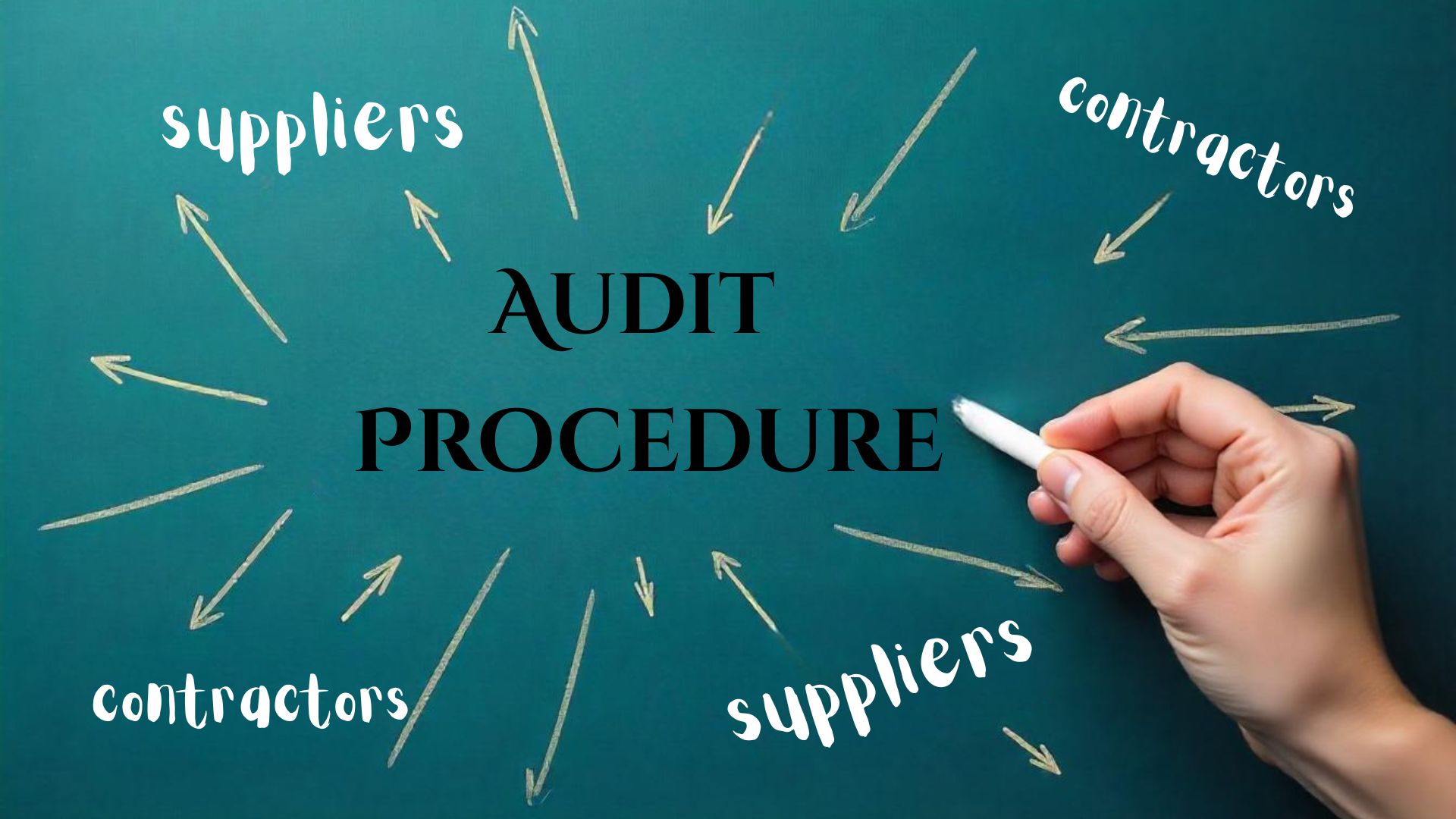A Straightforward Guide to Audit Procedures for Suppliers and Contractors
Picture this: you’re a supplier or contractor, hustling to deliver top-notch goods or services, and then someone mentions an audit procedure. Your heart might skip a beat. Audit procedures? They sound like a maze of paperwork and stress, right? But here’s the thing—audit procedures don’t have to be a nightmare. When done right, they’re like a health check for your business, ensuring everything’s running smoothly and keeping you in the good books with your clients. This guide is for suppliers and contractors who want to nail their audit procedures without losing sleep. Let’s walk through what an audit procedure entails, why it matters, and how you can breeze through it with confidence.
Why Audit Procedures Aren’t the Bad Guy
It often get a bad rap—like they’re out to catch you slipping. But honestly, they’re more about clarity than criticism. For suppliers and contractors, audit procedures verify that you’re meeting contractual obligations and keeping your financials in check. Think of it as a way to prove you’re as reliable as you say you are. Whether you’re supplying raw materials or building infrastructure, an audit procedure ensures your processes hold up under scrutiny.
Why should you care? Because a clean audit procedure can strengthen your reputation and build trust with clients. On the flip side, a sloppy one might raise red flags, costing you contracts or credibility. Plus, with supply chains under pressure—hello, global trade hiccups and rising costs—audit procedures are non-negotiable. So, let’s break down the process and make it less intimidating.
Getting Your Ducks in a Row: Pre-Audit Prep
Before the procedure starts, preparation is your best friend. You know what they say: failing to prepare is preparing to fail. Start by gathering all relevant documents—contracts, invoices, purchase orders, and delivery records. These are the backbone of any audit procedure. If you’re working with software like QuickBooks or SAP, pull reports on payments, inventory, and expenses. Make sure everything’s organized and accessible.
Here’s a quick checklist to keep you on track:
- Contracts and Agreements: Have your client contracts handy, highlighting key terms like delivery schedules or quality standards.
- Financial Records: Ensure invoices, receipts, and payment records are up to date. Auditors love clean numbers.
- Compliance Documents: Think safety certifications or licenses, especially if you’re in construction or manufacturing.
- Communication Logs: Emails or meeting notes with clients can clarify disputes or changes in scope.
A quick tip: digitize your records if you haven’t already. Tools like Google Drive or Dropbox can keep everything in one place, saving you from the chaos of misplaced files. Ever had that moment where you’re digging through a drawer for a missing invoice? Yeah, let’s avoid that.
The Audit Procedure: What to Expect
When the audit procedure kicks off, it’s like opening the hood of your car—you’re letting someone inspect the engine of your operations. Auditors will typically review your financials, processes, and compliance with contract terms. They might ask for evidence of quality control, like test results for materials, or proof of timely deliveries. If you’re a contractor, they could dive into project timelines or safety protocols.
Here’s how it usually unfolds:
- Opening Meeting: The auditors outline their scope and objectives. This is your chance to ask questions and set the tone.
- Document Review: They’ll comb through your records, looking for consistency and accuracy. This is where your prep pays off.
- Interviews: Auditors might chat with your team to understand workflows. Encourage your staff to be honest but concise.
- Site Visits: For contractors, expect a walk-through of your work site. Auditors may check equipment, safety measures, or inventory.
- Closing Meeting: They’ll share initial findings and discuss any issues. Don’t panic if there’s feedback—it’s part of the audit procedure.
One thing to keep in mind: auditors aren’t your enemies. They’re just doing their job. Approach them with transparency, and you’ll likely find they’re reasonable. I once knew a contractor who tried to “impress” an auditor with flashy presentations but forgot to double-check his invoices. Guess what? The auditors cared more about the numbers than the PowerPoint. Lesson learned: stick to the basics and keep it real.
Common Pitfalls and How to Dodge Them
Let’s be honest—nobody’s perfect. An audit procedure can uncover issues, but most are avoidable with a bit of foresight. Here are some traps suppliers and contractors often fall into and how to sidestep them:
- Incomplete Records: Missing invoices or unsigned contracts are a headache. Double-check your files before the audit procedure starts.
- Non-Compliance: If you’re skimping on safety standards, auditors will notice. Stay proactive—regular internal checks can catch these early.
- Poor Communication: If your team isn’t on the same wavelength, it shows. Brief your staff on audit procedure expectations and keep answers consistent.
- Overcomplicating Things: Don’t drown auditors in unnecessary details. Provide what’s asked for, clearly and concisely.
A friend of mine in the supply chain game once got dinged because his team didn’t document a last-minute order change. It was a simple phone call with the client, but without a paper trail, it looked like a mistake. Now he logs every call and email like it’s his job—because, well, it kind of is.
The Emotional Side of Audit Procedures: Keeping Your Cool
It can feel personal, can’t they? It’s like someone’s grading your life’s work. But here’s a little perspective: they’re not judging you as a person—they’re evaluating systems and processes. If something’s off, it’s not a reflection of your worth. It’s just a chance to tighten the bolts. Take a deep breath, stay organized, and treat the audit procedure as a learning opportunity.
If you’re feeling overwhelmed, break the process into bite-sized chunks. Tackle one section of documents at a time, or assign a team member to handle specific areas like compliance or financials. And don’t be afraid to lean on your network—other suppliers or contractors might have tips from their own audit procedure experiences. There’s a certain camaraderie in the industry, especially when everyone’s navigating the same challenges.
Wrapping It Up: Audit Procedures as a Stepping Stone
By now, you’re probably seeing audit procedures in a new light. They’re not just a hoop to jump through—they’re a chance to showcase your reliability and fine-tune your operations. Whether you’re supplying steel for skyscrapers or laying the foundation for a new bridge, a successful audit procedure proves you’ve got what it takes. And in a fast-paced world, where trust is everything, that’s no small feat.
So, next time an procedure is on the horizon, don’t sweat it. Get your documents in order, brief your team, and approach the process with confidence. You’ve got this. And who knows? You might even come out of it with a stronger business and a few new insights. What’s better than that?


